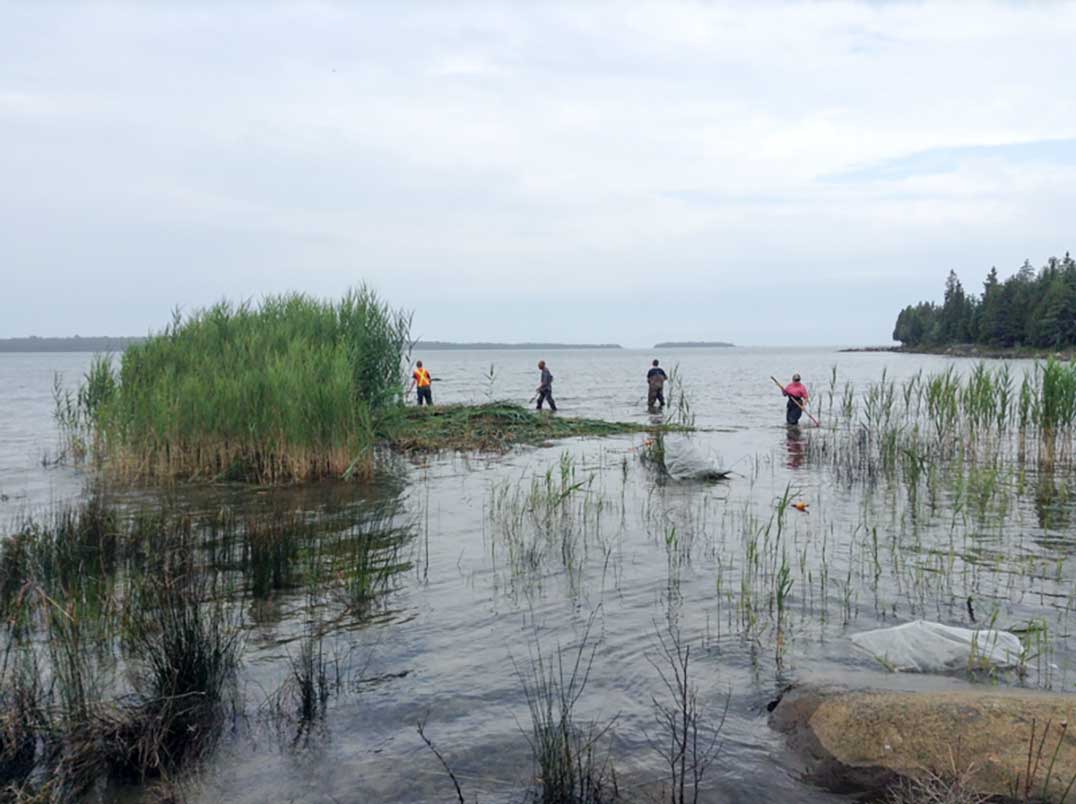MICHAEL’S BAY—Volunteers from across Manitoulin gathered at Michael’s Bay early last week ready to employ the latest weapon in the conservation arsenal to repel the invasive species phragmites (or Asian reed) invading our Island’s shores.
A Truxor cutting machine arrived at Michael’s Bay Monday and by early Tuesday morning it was hard at work slicing the thick hard reeds off below the water line. Without its above water foliage, the reed flounders and drowns beneath the waves.
“The Manitoulin Phragmites Project brought in the Green Stream crew, with the Truxor cutting machine and two floating mini-barges,” noted project coordinator Judith Jones of Winter Spyder Eco-consulting. “The Truxor cuts the phragmites and then the blades are switched out for a rake to pick up the cut material.”
What seems an insurmountable challenge when faced with manual control methods becomes just a lot of hard work when the Truxor takes to the water.
“With the help of Tehkummah Township’s public works crew, Manitoulin Streams and four dedicated volunteers we removed 11 dump truck loads of phragmites from Michael’s Bay,” said Ms. Jones. “The phragmites between the Manitou River and Blue Jay Creek are now under control, but it will need more work next year. The area on the far side of the Blue Jay has not yet begun, but is planned for next year with this machine.”

phragmites for the Truxor to pick up.
The Truxor doesn’t come cheap, but with the municipality pitching in and a lot of volunteers throwing their shoulders to the wheel the cost has been kept down. Cost estimates per diem for this kind of operation down south runs to around $9,000, but Ms. Jone’s local crew of four with two brush cutters can do this for around $1,300 she estimates and the Truxor cut seven dump truck loads of phragmites for its $5,000 a day—a significant savings.
Although this year’s Phragmites Week efforts have proven highly successful, and the Truxor assisted effort in Michael’s Bay has established that a concerted effort by a determined team can tackle larger established patches, there are some areas of the Island’s shorelines that will require a more concerted (and expensive) effort. But it is important that effort be made, as phragmites’ impact on the local ecology goes far beyond pushing out the indigenous bulrushes.
Ms. Jones explained that the reeds are so tough and grow so thick in their stands that aquatic life and marine animals who depend upon access to the shore cannot penetrate the stands.
It does not take long for a stand of phragmites to establish itself on a cottager’s beach or shoreline, with a potentially devastating impact on both the enjoyment and value of those shoreline properties. A timely investment could make all the difference.